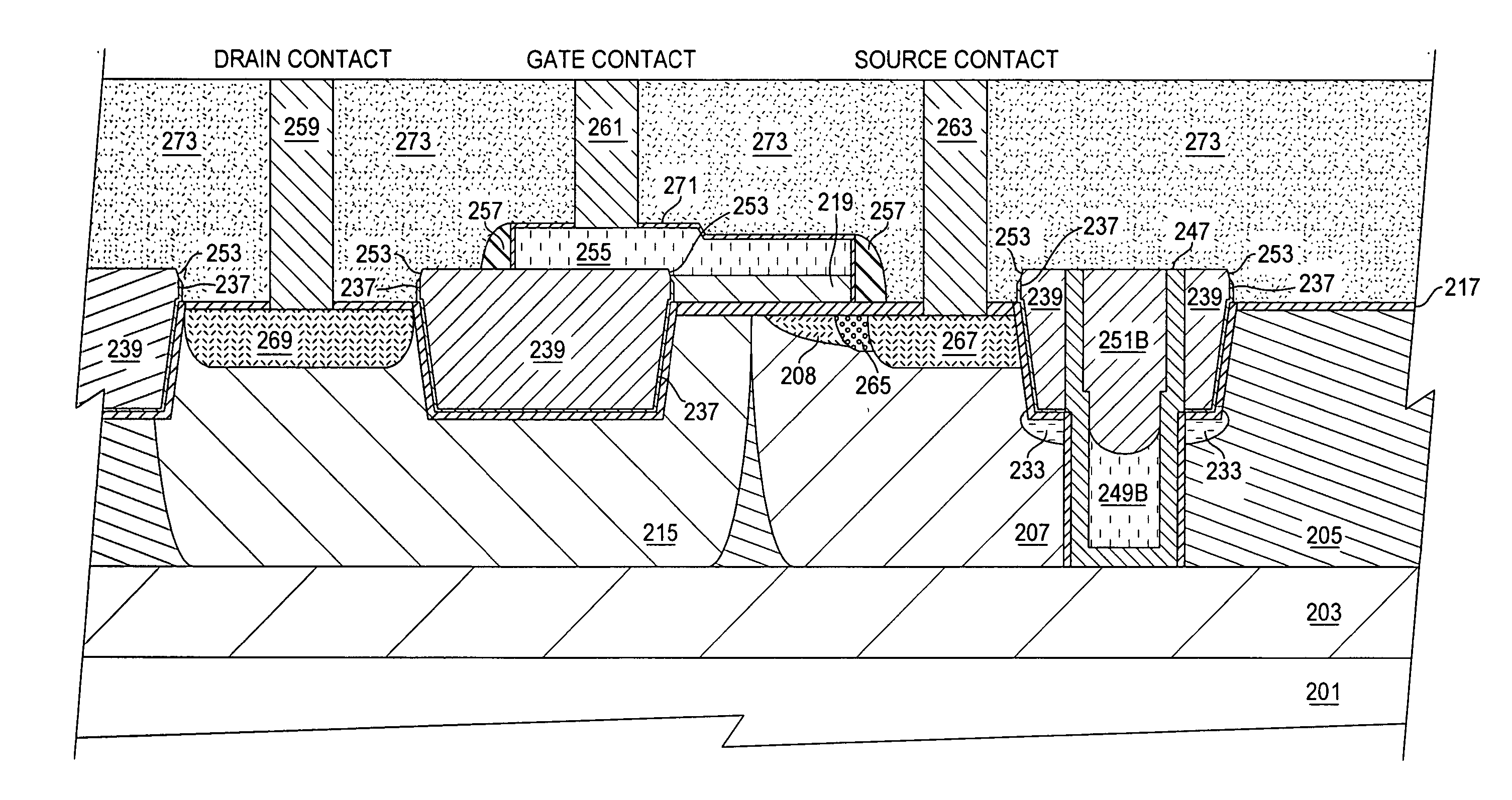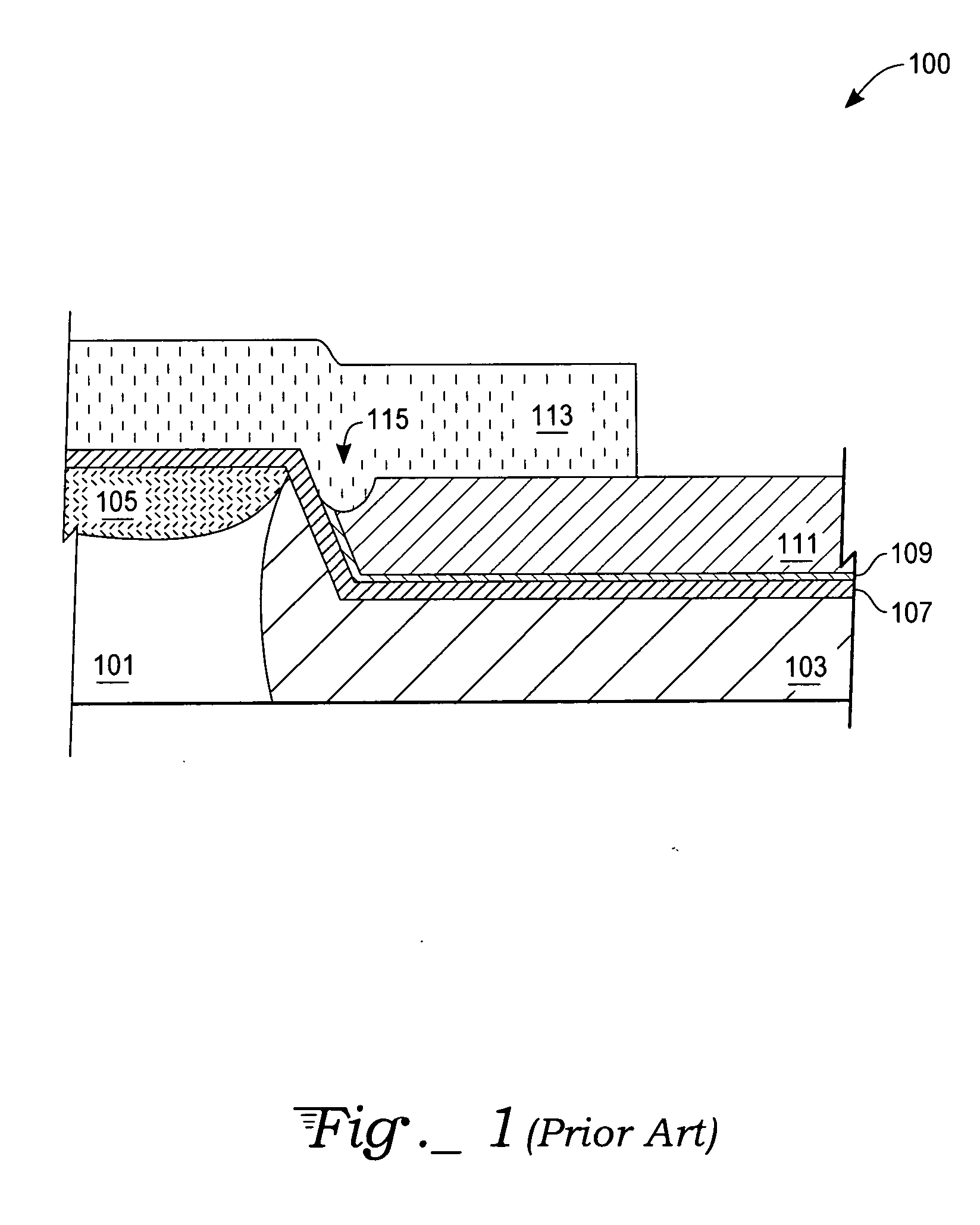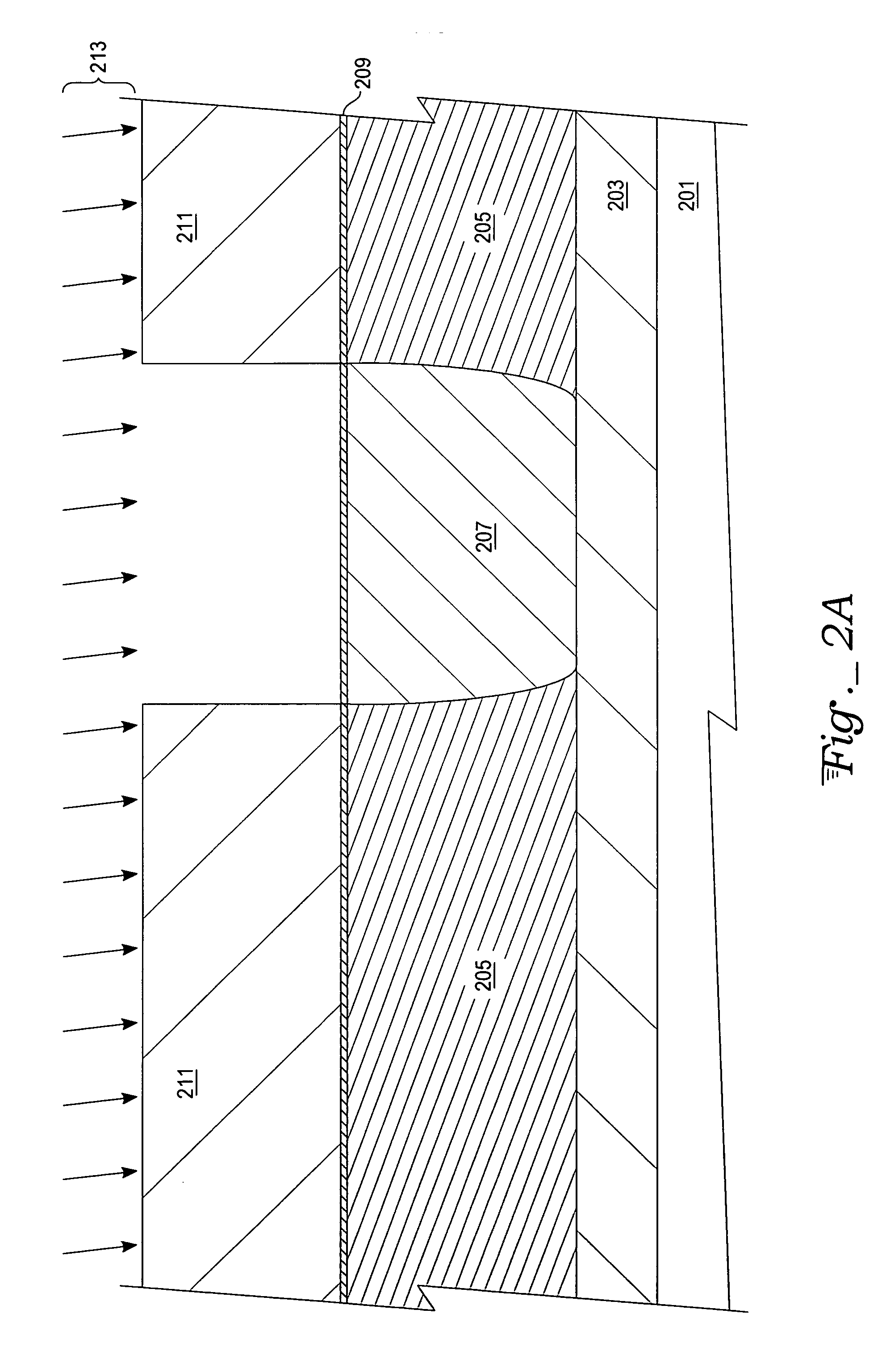Reduced electric field DMOS using self-aligned trench isolation
a self-aligned trench and electric field technology, applied in semiconductor devices, semiconductor/solid-state device details, electrical apparatus, etc., can solve the problems of reducing the switching speed and current carrying capacity of transistors, affecting both cost and reliability, and the manufacturing process is more difficult, so as to reduce the local electric field, reduce capacitance, and improve the isolation voltage
- Summary
- Abstract
- Description
- Claims
- Application Information
AI Technical Summary
Benefits of technology
Problems solved by technology
Method used
Image
Examples
Embodiment Construction
[0018] With reference to FIG. 2A, beginning exemplary processes of the present invention utilize a silicon-on-insulator (SOI) technique and include a substrate 201, an oxide isolation layer 203, and an SOI layer 205. A screen oxide 209 is either thermally grown or deposited on the SOI layer 205. A patterned and etched photoresist layer 211 provides a mask for an ion implantation step. In a specific embodiment, a concentration of boron atoms 213 forms a retrograde p-well 207, thus forming a body for an NMOS device. A skilled artisan will recognize that other doping techniques, such as diffusion, may also be readily employed to produce a similar p-well area.
[0019] In this exemplary embodiment, the substrate 201 is a silicon wafer. Alternatively, the substrate 201 could be another elemental group IV semiconductor or a compound semiconductor (e.g., groups III-V or II-VI). The substrate 201 may alternatively be a non-semiconductor, such as a photomask blank.
[0020] In FIG. 2B, additiona...
PUM
 Login to View More
Login to View More Abstract
Description
Claims
Application Information
 Login to View More
Login to View More - R&D
- Intellectual Property
- Life Sciences
- Materials
- Tech Scout
- Unparalleled Data Quality
- Higher Quality Content
- 60% Fewer Hallucinations
Browse by: Latest US Patents, China's latest patents, Technical Efficacy Thesaurus, Application Domain, Technology Topic, Popular Technical Reports.
© 2025 PatSnap. All rights reserved.Legal|Privacy policy|Modern Slavery Act Transparency Statement|Sitemap|About US| Contact US: help@patsnap.com



